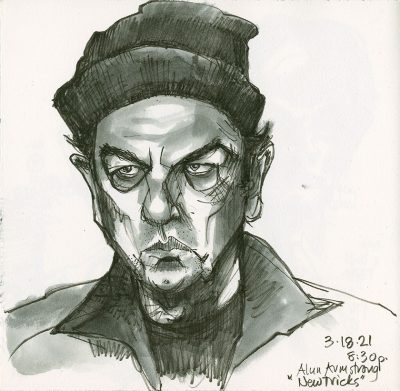
So much has kept me from scanning the many sketches of made of Alun Armstrong in March 2021 #MarchisSketchAlunArmstrongMonth.
But I did manage to scan a few of the sketches in the past week.
There are many, many more, some I quite like, some have no resemblance to Armstrong and I can only look at them and think, well I did enjoy the brush pen on that paper.
But I’ve got enough of them scanned now so that you can see a little bit of the ups and downs. I’ve put them together with some brief comments about what was in my mind, what I was hoping to do with a particular sketch, and how even when things didn’t work out I found something interesting to keep me going for the full month.
Every day in March this year I drew Alun Armstrong (using various television shows he was in as reference, so I watched a lot of TV during the project). Some days I did only one sketch, other days I kept working and working on sketch after sketch, just like a dog gnaws on a bone. It makes sense to me because I was trying to learn a visual vocabulary that would capture his likeness.
I hope looking at some of these will give you encouragement to start your own project of daily sketching of a repeating subject. If you have a pet at home I highly recommend you draw your pet. Or ask a family member to sit and read a book every day for 30 minutes while you sketch. But if you haven’t got access to a pet and you keep a different schedule from your family sketching a favorite actor is an option.
The above sketch is Sakura Pigma Professional Brush Pen FB with ink wash, and a lot of Pentel Pigment ink from a brush pen on the background. It’s in a green-lined journal I picked up at a bookshop. (I love painting and sketching on lined and gridded papers—it’s nostalgic for me, recalling the days I got by on an allowance and had to buy notebooks at the News Agents, foregoing my fish and chips treat to afford them.)
I threw some white paint on the one side of the face thinking I might redraw it. Then, in typical Roz fashion I found I quite like it this way. You can read my little notes to myself. I think it is always important when going over something with your editing eye to see which specific things need to be fixed, that you also find something positive to enjoy, and I really do enjoy the lower lip here. And that eyebrow—really, what’s not to enjoy there!
Later that evening I switched to a different show (from “New Tricks” to “Frontier”).
I also was on the look out for angles that I would work with that would push me. Something that would take me out of the need to get the proportions of that forehead and hairline right, because I simply wasn’t nailing it.
This is actually from a scene where he looks up at someone he’s just ordered hung. (Armstrong’s character is sort of a villain in “Frontier.”) I loved it because the angle of the face changed the dynamics of the hairline and forehead, and gave me some time to study the nose from a different angle.
I think it’s important to keep looking for different angles and that was my intention on that day.
By the 11th of March I was struggling to get all the shapes accurately to depict a likeness so I defaulted to contour drawing (verso page of the above spread). This typically helps me reset both my proportions and angles. I find contour sketches particularly helpful as I discover things in the contours I don’t always see when looking at the “whole.”
I was working in 3 journals and on loose paper at this time so there were many sketches between the verso page and the recto page (which was made 4 days later) in other books and sheets. In fact I’d come out of a slump of missing the likeness, and gone back into a slump of missing it again.
For the recto page I decided to just watch “New Tricks.” (I don’t know why my brain wrote down Dirty Tricks as the title—there is a movie about a cheating scandal in Competitive Bridge that I remember?)
During that episode of “New Tricks” Armstrong’s character looked under a table, and I thought, well that’s a different angle, let’s look at that, and concentrate also on the values. While it doesn’t look like much on its own, it’s the type of sketch that makes me happy because I know that with only a little finesse I could turn it into something. That’s a good note to go to bed on.
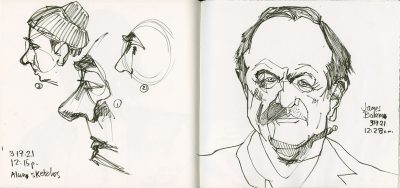 On another day I decided I was just going to look at Armstrong’s nose in profile. I have a ton of sketches like those on the verso page of the above spread. My ability to look at one thing over and over to try and understand it sometimes frightens me.
On another day I decided I was just going to look at Armstrong’s nose in profile. I have a ton of sketches like those on the verso page of the above spread. My ability to look at one thing over and over to try and understand it sometimes frightens me.
That’s actually 12:15 a.m. Then frustrated that I’m not cracking the nose code I drew another character on “New Tricks.” End on a happy note I say.
Here I’m back to looking for different angles—first he’s looking down. His character does this a lot over the course of the episodes I watched. Then on the recto page his character is actually lying on the floor reclining while talking with the other characters.
On this day, besides looking for different angles I really wanted to do value work, so I’m pushing the ink wash in both sketches.
Somedays I would go diagrammatic, with lots of notes. (Verso page above.) I find that if I talk myself through things in this way it helps me to focus on the areas I’m having difficulty with. I then followed it up with a series of very quick sketches. (Recto page.)
While none of them even approached likeness, I was really happy to see that I was beginning to get more of the shape of his head and a sense of the skull rounding at the top as it moved back to the hairline. Small victories are things you can build on in additional sketches.
These sketches actually led to the sketch that opens this post. That sketch is, in my mind, one of the best sketches I made of Armstrong during the project. So it reinforces for me, the idea of taking time to look, to make notes, to test, and then to slow yourself down and put it together in a more finished way.
Following the “success” of the sketch that opens this post I then moved into a sort of rhythm about the project. I’d try to sketch early in the morning when my eyes were at their best, and then again in the afternoon, and evening. At least one of those sessions was simple quick sketches like the above page spread showing Armstrong on the left and two other actors on the right.
I think the virtue of sketches like these is that they are made so quickly you have to focus on what is most important or essential, and keep going even if your lines are wonky. But that process of focus helps solidify in your mind what is important to catch about that face in the next attempt. Also these are simply a lot of fun to do. I recommend you do quick sketches every day. Five minute sketches like these keep your hand-eye-brain connected for when you are going out and about and sketching people. Time spent doing fast sketches keeps you ready for what’s next.
After the quick sketches I’ve just shown you, I watched a bit more of the episode and then had this opportunity to work on Armstrong’s profile. I was still working quickly, but I was trying to be a little careful about working out the relationship between the features. Again, it was a matter of using contour lines to see things more clearly. To separate all the nose lines I ended up adding the background. This also allowed me to immediately see I’d squashed the top of the head a bit. That serves as a good reminder to me to not be influenced by the edges of my journal!
And then somedays, when you are really working on a visual puzzle, it’s good to step away from it completely and do something obviously easy. That’s what happened below.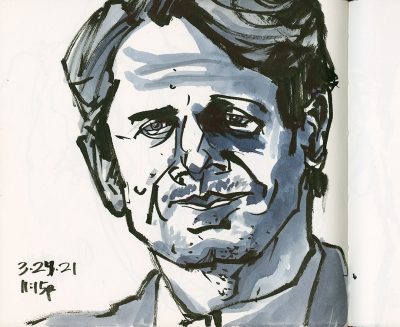
In this sketch of another actor in “New Tricks” I knew I could just take a bold brush pen and with a few strokes get a passable likeness, and play with shading. And all that seemed like a vacation from the sketch project that had begun to rule my days.
I have a couple other sketches of Armstrong scanned, and lined up for blog posts this week. But I think this selection of sketches gives you a good idea of what I was up to and how I kept myself going. You can always change paper, change tools, change approaches. You can always return to your reset position. (Mine is contour drawing.)
What I think is really important is that you stick with your intention, that you have the intention really clearly in your brain. I had wanted to study a particular actor’s face in daily sketches for a month. I didn’t want to limit myself to one sketch a day. I had time during my day to work in small sketching sessions.
I knew that those small sessions would be valuable. I knew I could focus on various features, look at proportions, play with angles, but most important I could keep getting observations down on the page. Because that was my intention, even when I had a day when all the sketching fell short of capturing a likeness that didn’t interrupt my momentum at all. Those days fueled me keep going back, to try another approach, and to look more closely—to see what I was missing.
Looking at the sketches again over the last couple weeks as I scanned them reminded me of how relentless I can be when working out visual puzzles. I look back on these sketches and smile. I am grateful for what they confirmed about my process. I haven’t had time for a lengthy project since my cataract operations in 2019, but I can see that my process hasn’t changed. Having a lower hit rate is annoying, but that’s really what it is at this point, annoyance. Acceptance doesn’t mean you give up pushing. And I have always pushed.
Acceptance doesn’t mean resignation. Acceptance is an understanding of reality or set of circumstances. Acceptance is a gift of a new baseline against which to keep pushing.
I’m grateful too, that I’ve always been process oriented because when you are process oriented there is so much more to enjoy—like every single moment that you are working.
You know what I’m going to write now—go start a project today. A daily project. Something that you can get done in a small amount of time, or in the breaks of your day. (If you don’t have breaks in your day now would be a good time to insert them!)
Look around, maybe it means something simple like finding 30 ways to sketch a red pepper over the next month. Or a way to build on your watercolor skills while sketching that pepper.
Drawing isn’t something that you can wait until the weekend to squeeze into your life.
Drawing is about looking at how something is put together. Drawing is about understanding. Drawing is about discovering things as you work—everyday.



















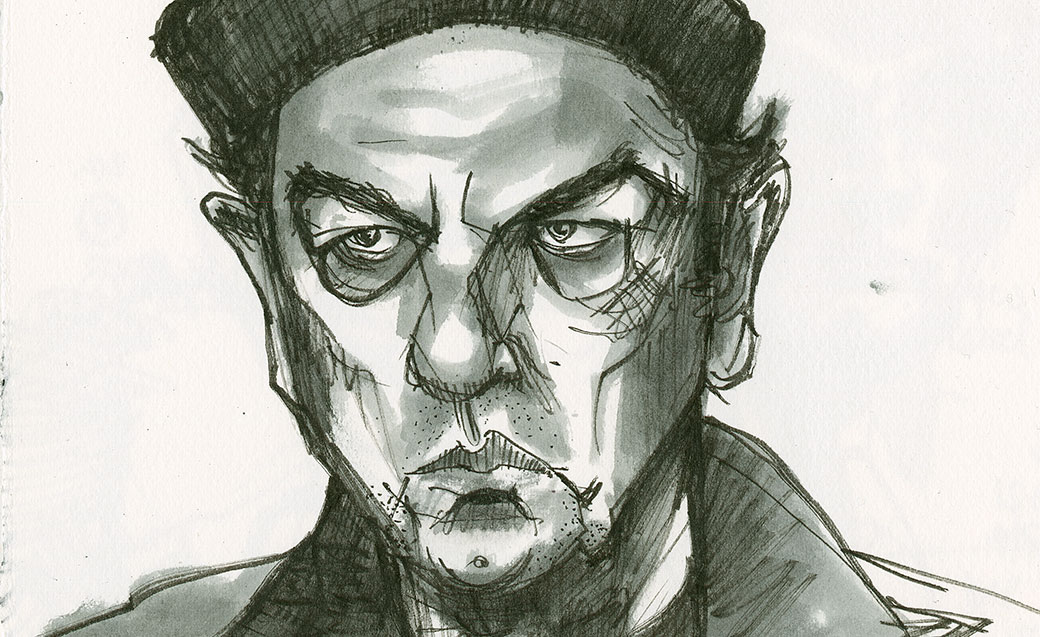
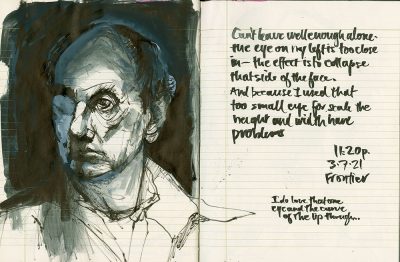
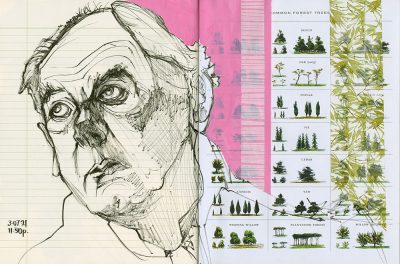
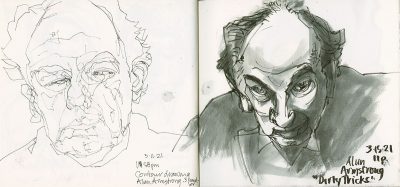
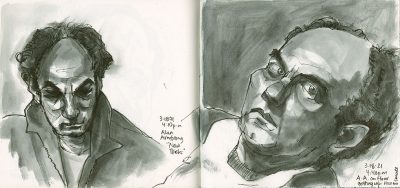
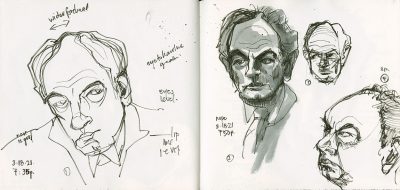
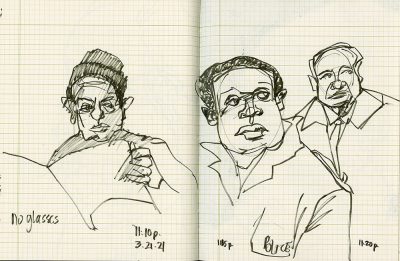
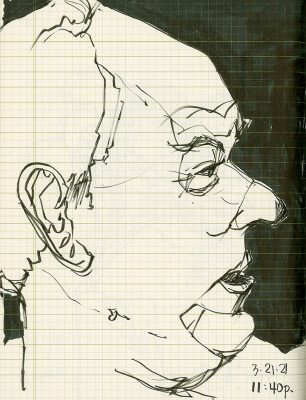
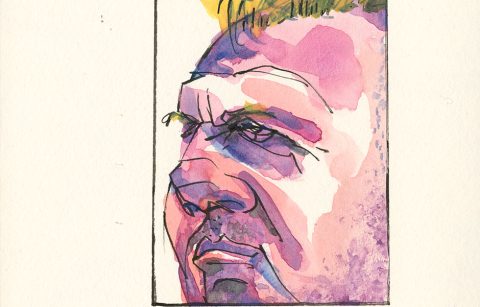
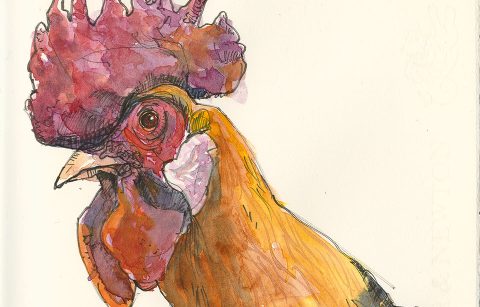
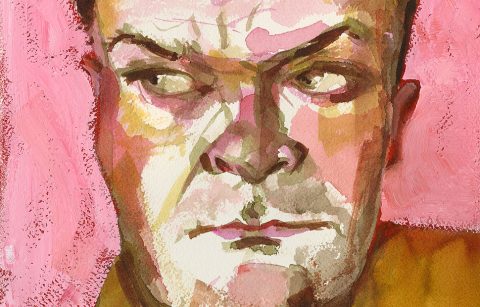
This blog post is really amazing, especially the way you ended it. Thank you very much for sharing so much of your drawing thoughts….
I’m glad that you found it interesting. I appreciate you stopping by.
Marvelous post with not only tons of good sketching/drawing information but several suggestions about the “thinking” behind the process. A treat to view and read. Many thanks.
Frank
Frank thanks for letting me know you enjoyed this one. I know it’s like preaching to the converted in your case, but I’m still glad to know that it was interesting. I hope you are getting some sketching done. Stay safe.
I really enjoyed participating last March. Even though I didn’t draw him anywhere near as often as you, I became familiar enough with his face to make looking at all your sketches particularly interesting. Thanks for sharing them and your process. What’s up for next March?
Susan, I was so glad you could participate last year. I don’t know about March 2022. Maybe March still is sketch Alun Armstrong Month?? I haven’t been thinking about next March at all, until I started to post these. (And found even more sketches of him that I’ll post after this week.) Maybe just a small watercolor project in March. I have to get well and get caught up before I can look ahead. Or maybe it will be David Suchet—I’m watching so much Poirot and sketching him NOW. I’ll keep you posted. Hope you are getting some sketching done.